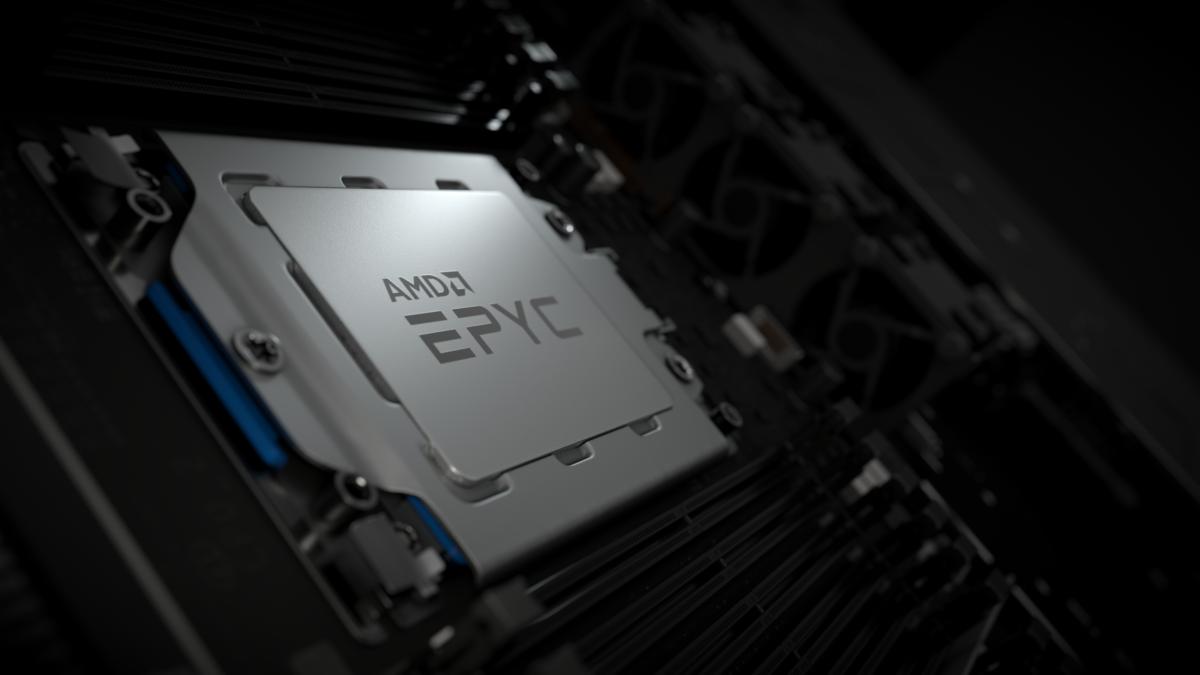- Your iPad is getting a major upgrade for free. 4 top features I can't wait to try in iPadOS 26
- Your MacBook is getting a big upgrade. 5 best features I can't wait to use in MacOS 26
- The Growing Threat of AI-powered Cyberattacks in 2025
- I test tablets for a living and this is the Samsung tablet I recommend the most
- The Cost of Ignoring Patches: How State and Local Governments Can Mitigate Damaging Security Breaches
AMD builds momentum in server market

The server market is fairly slow to change in all things, and that includes its processor platforms. But lately it’s clear AMD’s comeback is getting very real.
Left for dead four years ago, AMD already has won over the gamers. Its Ryzen series of processors are the go-to choice for system builders on YouTube, whose specialty is building a high-end gaming rig in 15 minutes. But the server market is also taking note.
The latest sign came from Mercury Research, which follows the semiconductor market, in particular CPU sales. For the fourth quarter of 2020, Intel held 92.9% market share to AMD’s 7.1%, but Intel was down from 95.5% one year earlier in Q4 2019 and AMD was way up from 4.5%. For the server market, that’s some rapid growth.
Principal analyst Dean McCarron noted that AMD’s second-generation Epyc server processor, codenamed Milan, contributed to the gains, while the older Rome generation continued to grow. Milan processors come with an incredible 32 and 64 cores. Intel maxes out at 28 cores, although a 48-core processor is coming.
Where AMD is doing particularly well, no doubt thanks to its core count, is in high performance computing (HPC). For starters, HPE’s Cray subsidiary has built two supercomputers for the U.S. Air Force focused on weather forecasting that, when combined, are said to be more than six times more powerful than their predecessor.
Both of the Cray EX (formerly Cray Shasta) supercomputers are running at Oak Ridge National Laboratory in Tennessee. The Air Force has named the two systems “Fawbush” and “Miller” after meteorologists Major Ernest Fawbush and Captain Robert Miller, who predicted the first tornado forecast at the Tinker Air Force Base in Oklahoma in 1948.
If you have to ask why the Air Force needs a weather prediction computer, you’ve never flown in turbulence. The Air Force Weather uses the weather intelligence, across atmospheric and solar data, to deliver ongoing alerts, analyses and forecasts to U.S. defense missions worldwide.
Fawbush and Miller, combined, are 6.5 times faster than Air Force Weather’s existing system, known as Thor, at a peak performance of 7.2 petaflops. In fairness, Thor was deployed in 2016, making it rather long in the tooth for a supercomputer. Fawbush and Miller together allow for larger computations at a higher resolution and increasing accuracy in global weather simulations from 17 kilometers between model grid points to 10 kilometers.
Another big win for AMD came via Lenovo, which will deliver Holland’s most powerful supercomputer to SURF, a Dutch ICT cooperative for education and research. When completed, the new HPC system will be used by education and research institutions throughout the country.
The supercomputer system will utilize Lenovo ThinkSystem servers and its Neptune water cooling with AMD Epyc processors, Nvidia A100 Tensor Core GPUs, and Nvidia Mellanox HDR InfiniBand networking. The system will have a peak performance of 14 petaflops. Construction will begin soon, with phase one of the new system expected to be operational by the middle of the year.
SURF said it chose Lenovo for its water cooling system. “For SURF, an important requirement for the new supercomputer was that it should be as energy-efficient as possible. The used and innovative water cooling technology cools the system by about 90%, which means that much less air cooling with fans is required. This reduces energy consumption and at the same time increases performance,” the organization said in a statement.
Copyright © 2021 IDG Communications, Inc.

